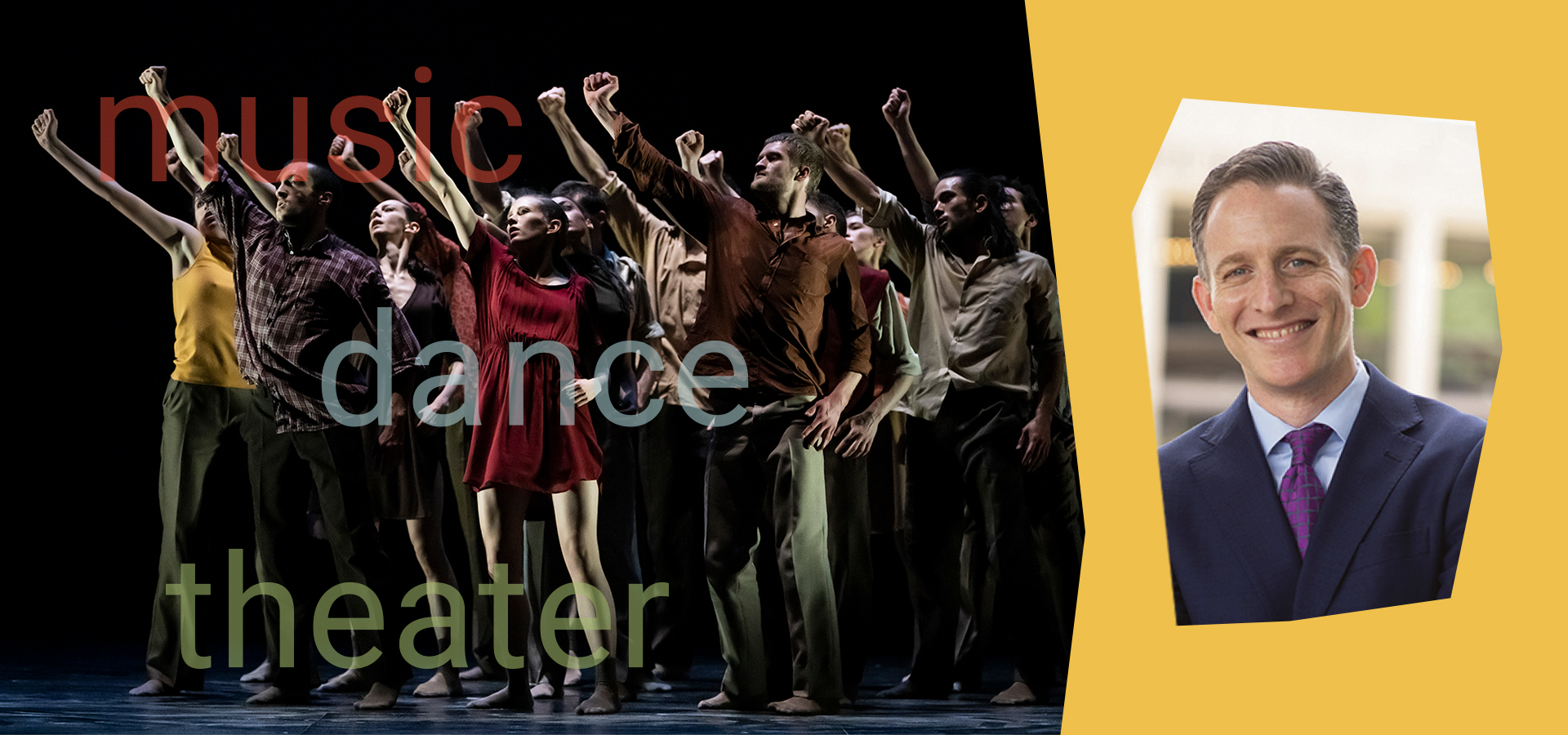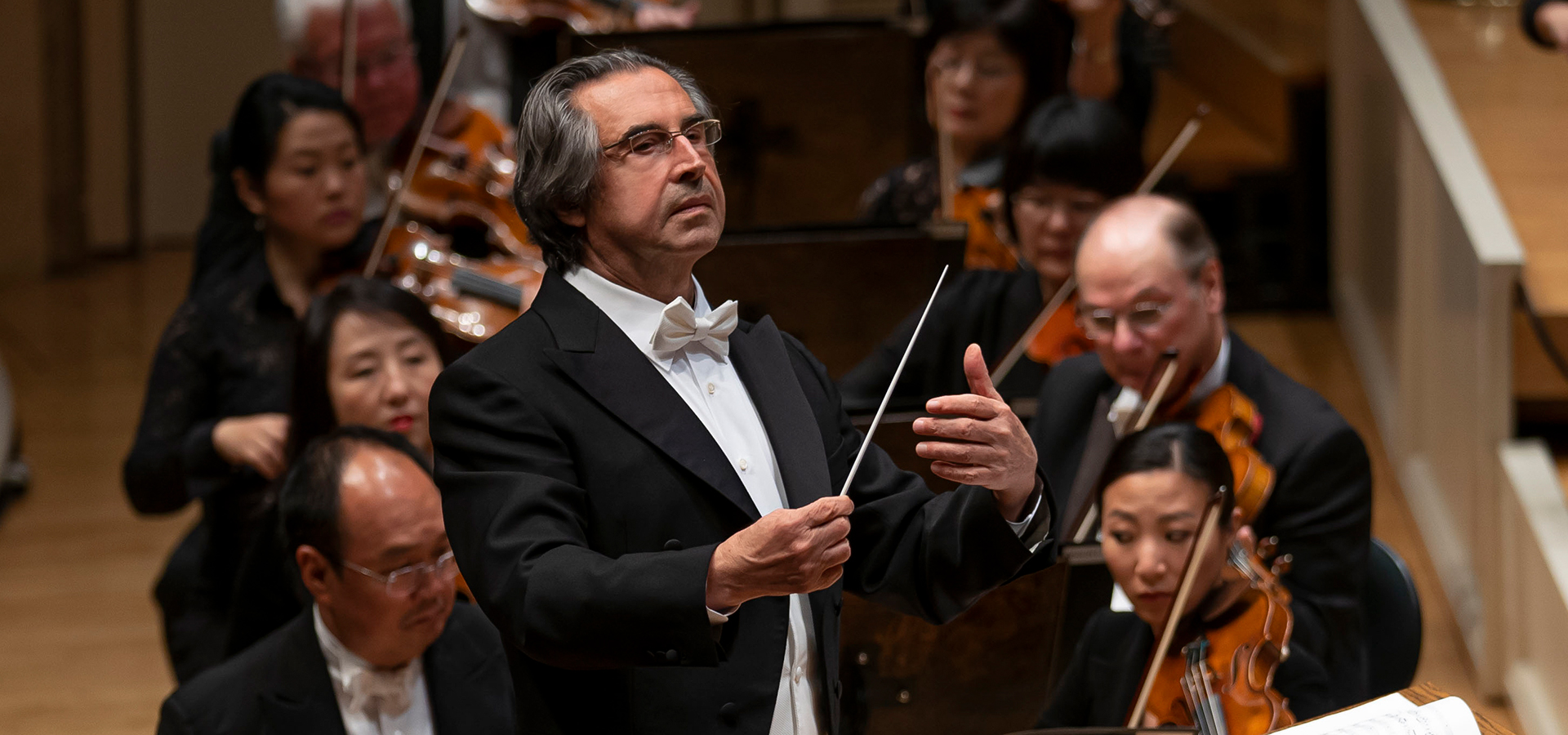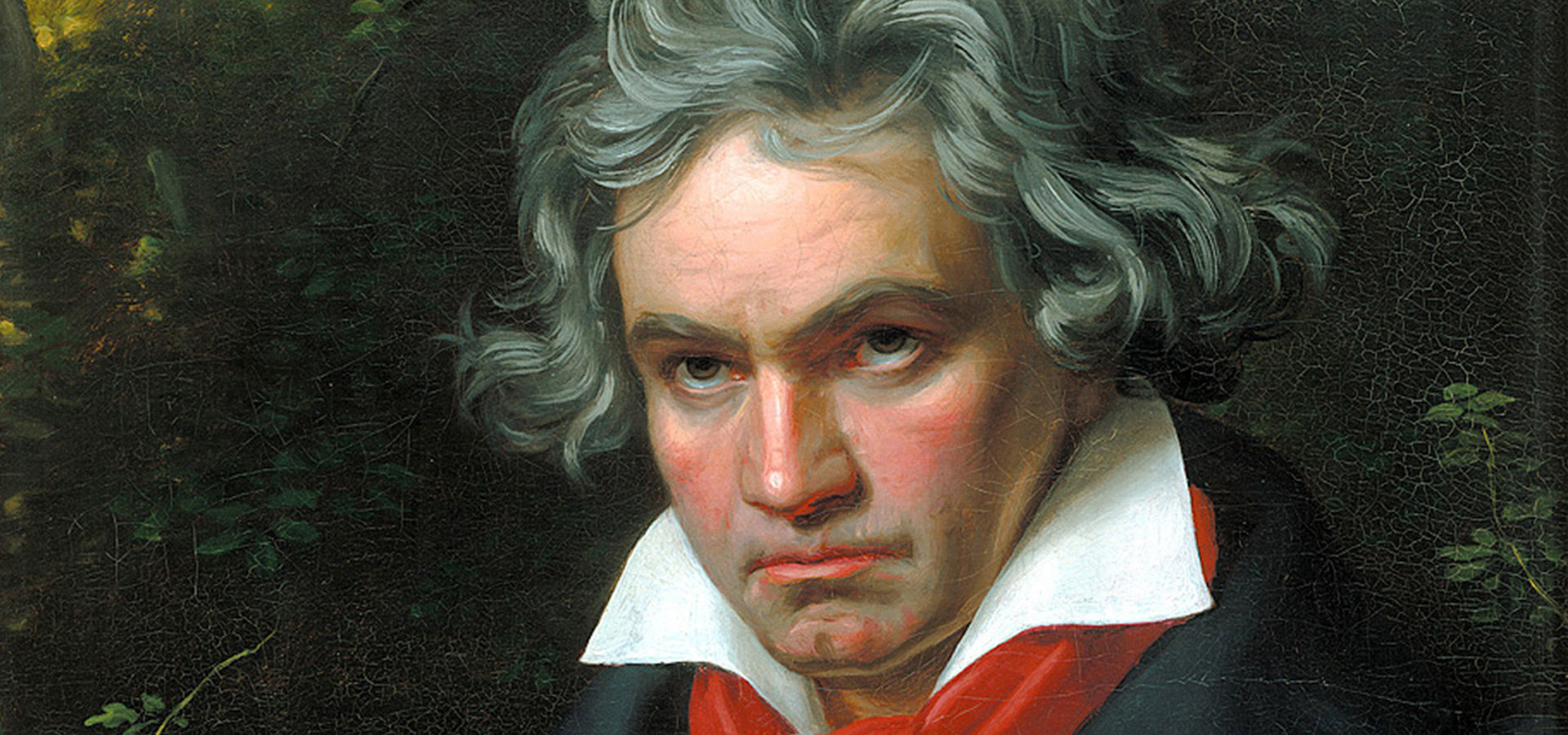
Beethoven 250: In Search of Something Unreachable
In this excerpt from Beethoven’s Shadow, Jonathan Biss considers what has developed into a lifelong effort to come to terms—both personally and professionally—with the composer’s titanic accomplishment.
by Jonathan Biss
As part of Cal Performances 2019-20 season, pianist Jonathan Biss performed the complete cycle of Beethoven’s 32 piano sonatas in seven concerts in Hertz Hall.
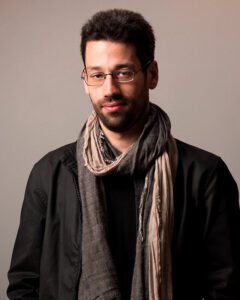 The word “wonderment” goes a long way towards conveying my own feelings about Beethoven’s music. It was the dominant sensation when I first heard Serkin’s Appassionata on a cassette tape in the car, at age 9. It was again at the forefront when I discovered the Grosse Fuge, a year or two later, in a recording by the Budapest Quartet. 6 (I can remember, vividly, that my immediate reaction was that the piece was totally incomprehensible, and that I had to hear it again, right away; years later, after countless hearings, and even a number of performances of Beethoven’s own arrangement of the piece for piano four-hands, it seems only slightly more comprehensible, and remains as irresistible as ever.) And it was an actual sensation, felt in my whole body, when I had that first encounter with the complete cycle of piano sonatas at age 13.
The word “wonderment” goes a long way towards conveying my own feelings about Beethoven’s music. It was the dominant sensation when I first heard Serkin’s Appassionata on a cassette tape in the car, at age 9. It was again at the forefront when I discovered the Grosse Fuge, a year or two later, in a recording by the Budapest Quartet. 6 (I can remember, vividly, that my immediate reaction was that the piece was totally incomprehensible, and that I had to hear it again, right away; years later, after countless hearings, and even a number of performances of Beethoven’s own arrangement of the piece for piano four-hands, it seems only slightly more comprehensible, and remains as irresistible as ever.) And it was an actual sensation, felt in my whole body, when I had that first encounter with the complete cycle of piano sonatas at age 13.
Those were all listening experiences. When I am the one playing—that is to say, when my relationship to the music becomes tactile and is complicated by questions of self-expression—the sensation becomes exponentially more powerful. This sort of awe, while a very intense thing to live with, is not in any way negative; in fact, it is probably essential, given my conviction that the search for something unreachable is part of this music’s expressive DNA. But at the same time, it creates a very practical difficulty: once you come to the conclusion that something is unreachable, how—and when—do you decide to reach for it? If one is, by definition, never really ready to play all the Beethoven Sonatas, when is the moment to say, “ready or not, here I come?”
In trying to answer this troublesome question, I again resort to a negative definition: It may be impossible to know that you are ready to take on such a project, but it is emphatically possible to know that you aren’t ready. For most of my life—probably since the Peabody cycle—I’ve known that I’ve wanted to play the 32 Beethoven Sonatas. What I’ve known, to be more precise, is that this body of music is more important to me than just about any other, and that I want—feel compelled—to spend my life interrogating it. And while the open-ended study of music can be a wonderful, wonderful thing, one’s relationship with a piece invariably takes on new dimensions after public performance. There are probably many reasons for this—again, there is the tactile aspect of music-making, so vital to an instrumentalist, which will always receive more emphasis when a performance looms—but above all it is because these works exist to be communicated, and thus there are things to be known about them that one simply cannot know without experiencing that communication. And so, when a concert presenter in a major American city asked me, aged 23, to play the 32 sonatas, I should have been thrilled. And in fairness, I was sort of thrilled. At the same time, though, I was absolutely plagued with doubt. So plagued that nothing—not putting off the start of the project for three years, or spreading the concerts over a longer period—could make me feel that the enormous fear I felt was unjustified.
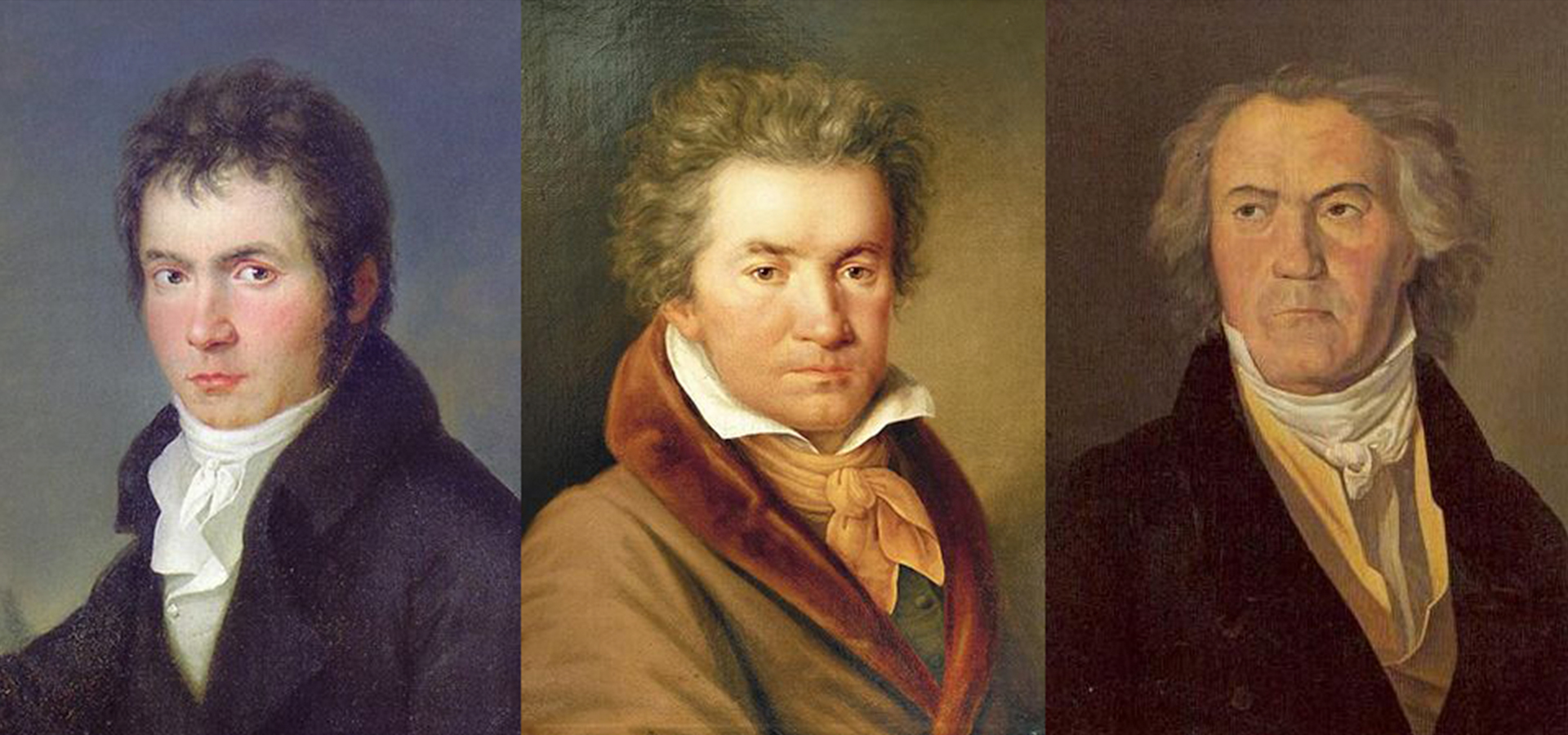
Beethoven at different ages
Some of the sources of the fear were probably intangible, but others were plenty tangible. First of all, at that point I’d played no more than 10 of the sonatas, including just one of the last five. (While it would be wrong to say that the earlier works are easier—on a purely physical level, for one, some of them are enormously uncomfortable to play—the late sonatas are composed in a language, or languages, so unprecedented, unique and seemingly inscrutable, that coming to terms with them seems to me a greater bridge to be crossed.) While I’d always assumed—to whatever extent I’d thought it through—that when I got around to performing the whole cycle there would be certain sonatas I’d still need to learn, making the leap when I still had 22 sonatas to go seemed to involve a degree of hubris.
A second reason, closely related to but ultimately independent from the first, is that experience has taught me that the physical and mental preparation of a piece of music can take you only so far: Putting the piece away for a time, letting it rest while the mind and fingers are occupied with other things, often leads to more development than the actual, quantifiable work does. Time and time again, I’ve struggled with something—the shape of a phrase, the handling of a transition—in a work that is new to me, searched and searched for a solution that seemed organic, and found that nothing I tried sounded natural—nothing passed the “rightness” test. But then, after leaving the piece for a period of several months, sometimes really not even thinking about it at all, the same passage has somehow, through some kind of osmosis, resolved itself, and no longer poses a question at all. (Or rather, to go back to Schnabel once again, having answered one question, it now poses a new one.) It can be frustrating knowing that this process has no shortcuts, but ultimately it has led me to the conclusion that I simply should not perform a work immediately after learning it; much better to let it percolate first, away from the pressurized atmosphere of the concert hall, which tends to force the performer to fall back on what works—even if it doesn’t work too well. And if I had accepted that offer when I was 23, there would have been no way around the reality that I would need to play many of the sonatas immediately after learning them.
Then there was a third reason, which goes beyond the Beethoven Sonatas themselves: Performing the cycle when I still had so many sonatas to learn would have meant a degree of immersion in that music so extreme, it would have all but excluded the possibility of my learning anything else at a time in my life when I should have been musically omnivorous. This is partially, of course, a question of my musical development at large: It would have been a very bad decision to have taken on the complete Beethoven Sonatas and in the process moved away from other music—the Mozart concerti, or Schumann’s solo works, for example—which was arguably as important to me, and which would become vastly more difficult to learn if I postponed it too long. But it also played directly into the question of my readiness to take on the project itself. Beethoven’s music is so exceedingly easy to program in part because it represents such a watershed in the history of music: To a remarkable extent, all the music that precedes it (certainly in the classical era) seems to be leading up to it, and all the music that has come since exists in response. Haydn’s will to surprise, to invent, and Mozart’s way of finding expressive possibilities everywhere (how different they are from one another!) are among the roots of Beethoven’s music, which grows from them in ways neither prior master could have envisioned. And one would have to go outside the central European tradition to find music written after 1827 that does not grapple with the essential aspects of Beethoven’s music—the fierce independence; the architectural asymmetry, with enormous works resisting any resolution until their final movements; the harmonic boldness, which precipitated the slow collapse of the tonal system; the grit. And even farther afield, he looms large: With music as various as Kirchner and Kurtág, Janácek and Takemitsu, he might not be central, but one quality or another of the music points backward toward him; he is always in the room. And so, deciding to spend the bulk of several years of my life with Beethoven, without having addressed such a huge volume of great music with so much to say about him, seemed not only inadvisable, but irresponsible.
Seven years later, what has changed? I will make this series of recordings over a nine-year period, which naturally makes the prospect somewhat less daunting. And a significant side effect of this pacing is that my relationship with Beethoven while I am preparing the recordings will be immersive but not exclusive; his music will exist not in a vacuum, but in conversation with his predecessors and followers (or rather, precedents and consequents). Still, my decision to dive into this undertaking when I could not bring myself to commit to it when it was offered to me, relatively recently, on a plate represents a significant shift. Particularly as what I am committing to now is not just performances of the sonatas, but recordings—recording, as described, being the most fraught, disorienting process in a musician’s life.
First, the straightforward answers: The 10 sonatas I’d played as of 2004 have now become 18, drawn from all periods of Beethoven’s compositional career. While it is true that each sonata poses decidedly unique questions and problems—to refer to the Beethoven Sonatas as a “body of music” is misleading, given the extent to which each sonata is a self-contained emotional universe—the percentage of this music I’ve now played makes me feel that I am at least reasonably well acquainted with both his musical personality and his ever-evolving musical language. This feeling is bolstered by the amount of Beethoven I’ve played beyond just the sonatas (many other isolated solo works; all of the concerti; most of the chamber music), and the time I’ve spent listening to and studying the symphonies and, especially, the string quartets. The latter, even more than the sonatas, often seem to me to be Beethoven’s most personal statements, and perhaps because they are written for instruments Beethoven did not have a physical relationship with, it is in these pieces that earthly concerns—practicality for the player, comprehensibility for the listener—seem furthest from his mind, freeing him to write both some of his most consoling and his most harrowing music. The late quartets in particular often seem to be beyond human understanding, and yet to engage with them is to feel that you know Beethoven, somehow.
And in these past seven years, I also learned plenty of other music, from Bach and Händel to new works—in several cases, ones composed specifically for me, which gave me invaluable insight into the creative process from which I, as an interpreter, am one enormous degree removed—and of course, a vast quantity in between the two. I learned a huge amount of Mozart, which taught me about Beethoven not through their similarities but through their staggering differences. In short: Mozart, a theatrical composer if there ever was one, writes about the real world; Beethoven writes about an idealized world. Beethoven’s admiration for Mozart was enormous, which makes it all the more interesting that the drama of his music is drawn from such utterly different sources than Mozart’s. While Mozart’s music so often suggests conversation, Beethoven’s is most often written in one immensely strong voice. Where Mozart’s temperament is quicksilver, Beethoven’s is steadfast. And where Mozart is so often willing to interrupt the narrative of a work if inspiration takes him in a different direction, Beethoven’s music is nearly always relentlessly argued, never straying significantly from the business of resolving the central questions it poses.
I learned a great deal of Schubert, and was repeatedly struck by the way this musical genius with a personality so fundamentally different from Beethoven’s was still profoundly influenced by him. There are some very specific instances of this debt—the last movement of Schubert’s A Major Sonata, D. 959 hews far too closely to the finale of Beethoven’s Op. 31, No. 1, in form and even in specific gestures, for it to be an accident7—but it is the monumentality and the individualism Schubert pursued in his late works that really show what the example of Beethoven provided him with. The material is utterly different in character, and the use of the material is no more similar—where Beethoven develops and insists, Schubert wanders and dreams—but the breadth of Schubert’s vision and the nerve he needed to realize it show beyond doubt how closely he had studied Beethoven.
I learned much of Schumann’s piano music, and found that even German music’s most original and unanticipated voice is in conversation with Beethoven. The poetry, the ear for detail both bizarre and exquisite and the talent for glorious non sequitur are all Schumann’s own, but the sense of striving and the use of music as diary—as a means of working through life’s terrors and dissatisfactions—are straight out of Beethoven. I played many of Brahms’ great works, and was moved by the obviously crushing weight that this master, born six years after Beethoven’s death, felt in the form of the need to be Beethoven, and the subsequent difficulty he had merely being his own, great, self. (Brahms may have carried this burden more heavily than others, but Beethoven cast the same shadow over the entire nineteenth century.) Furthermore, it was through Brahms that I discovered something equally true of Beethoven: that the presence of rigor is in no way an impediment to the expression of passion, and that the craft of composition, while no substitute for inspiration, is absolutely essential if the inspiration is to have any impact at all.
I learned the works of Schoenberg and his contemporaries, and felt more strongly all the time that while Beethoven never could have imagined this music, it was a natural consequence of the trail he blazed. Schoenberg spoke about his need to “emancipate” dissonance with the 12-tone system he built, and Beethoven’s music, in its daring, so destabilized the diatonic system that the road toward atonality was in a sense already paved by the time he wrote his last works. And of course, Schoenberg’s attempt to create an entirely new language, which he did with tremendous fanfare and, one can now say, six decades after his death, limited success, makes Beethoven’s late period seem more awe-inspiring than ever. For where Schoenberg’s serial works juxtapose passages of great nostalgic beauty with music that is both leaden and obviously “constructed,” Beethoven’s late style, while no less linguistically removed from all that came before it, is seamless enough to accommodate some of the most profound statements of western civilization. To play one of Schoenberg’s piano works directly before Beethoven’s Op. 109—as I’ve done on a number of occasions—is to make the rather astonishing discovery that the Beethoven is not only more satisfying, but more daring and modern than the Schoenberg. The latter’s music is often complex, but it is a complexity that one can work through; the mystery of Beethoven remains inexplicable.


